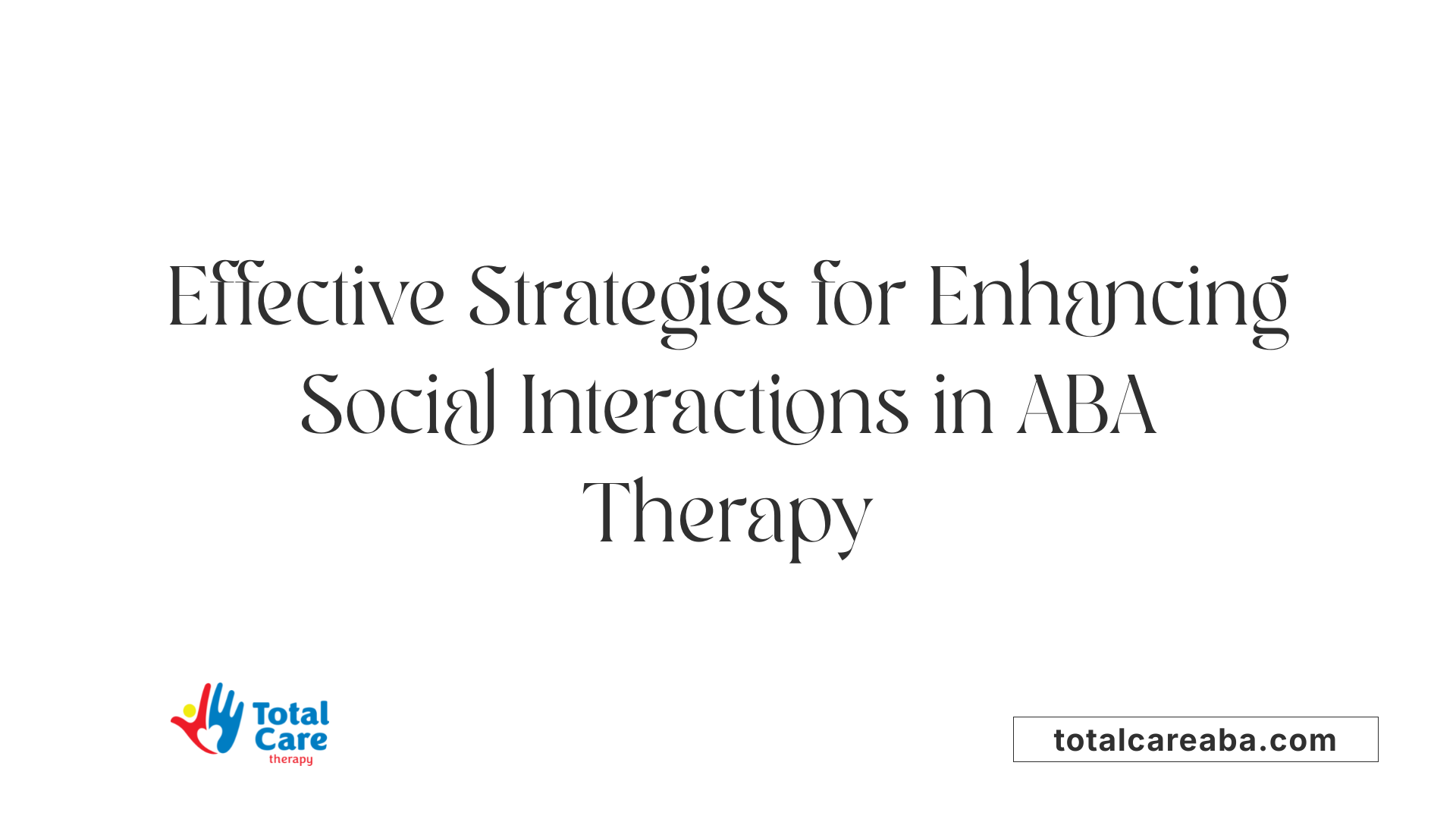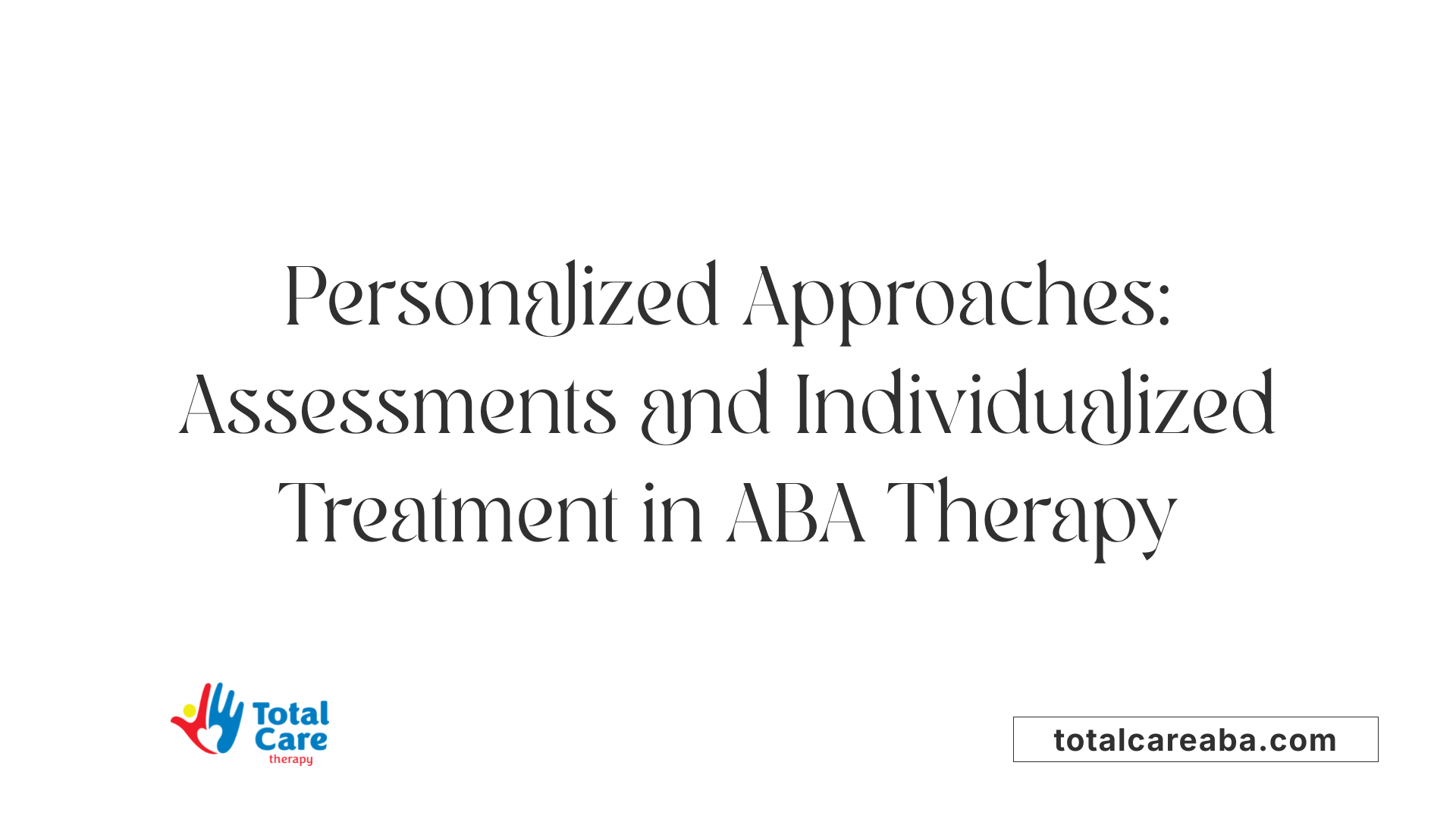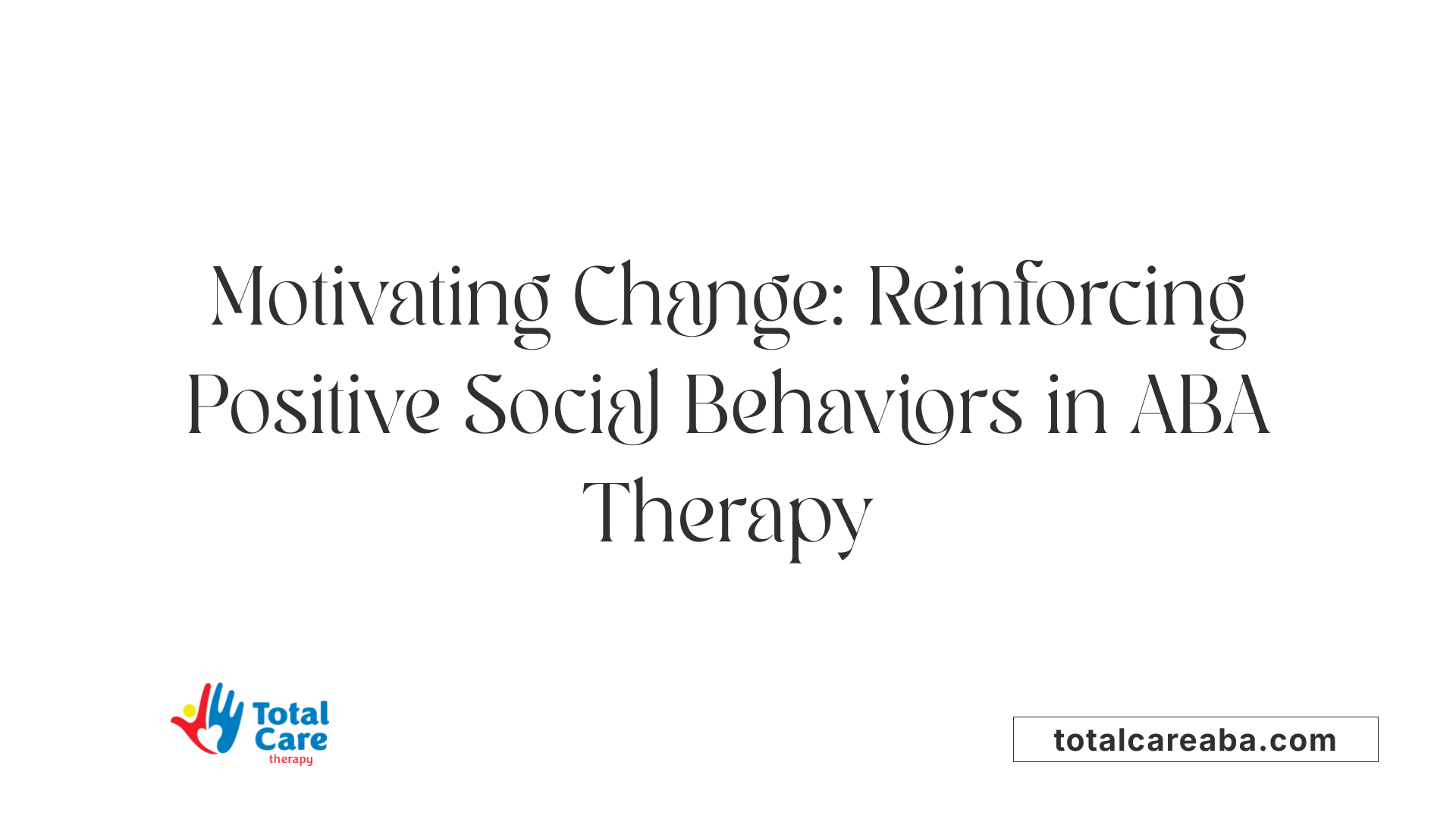How ABA Therapy Helps Children with Autism Navigate Social Situations
Navigating Social Landscapes with ABA Therapy
How ABA Therapy Helps Children with Autism Navigate Social Situations
Introduction to Social Skill Development in Autism
Navigating social situations can be challenging for children with Autism Spectrum Disorder (ASD). Applied Behavior Analysis (ABA) therapy offers a structured, evidence-based approach to help these children develop the necessary skills to engage and interact socially. By focusing on individualized treatment plans and the systematic teaching of social behaviors, ABA therapy provides a supportive framework for children to improve their communication skills, understand social cues, and participate in social interactions.
Understanding the Essence of ABA Therapy

What are the benefits of ABA therapy for social skills in children with Autism Spectrum Disorder?
ABA therapy offers numerous benefits for social skills development in children with Autism Spectrum Disorder. It employs evidence-based strategies such as positive reinforcement, prompting, and task analysis to encourage desired social behaviors while increasing communication skills.
Through structured activities like role-playing and visual supports, children learn to navigate social interactions, improve their understanding of social cues, and build independence. Key techniques include:
- Positive Reinforcement: Encourages repetition of desired behaviors by providing rewards, fostering motivation.
- Role-Playing: Offers practice in a safe environment allows for better preparation in real-life scenarios.
- Social Stories: Educates children about expected behaviors in various situations, enhancing their skills systematically.
- Modeling: Involves demonstrating appropriate behaviors for children to observe and imitate, thus aiding social understanding.
Additionally, individualized treatment plans are tailored to each child's unique challenges.
Overall, ABA therapy fosters social competence, enhances self-confidence, and helps children form meaningful relationships with peers, positively impacting their social integration. Children equipped with these skills can significantly improve their interactions, paving the way for more fulfilling relationships.
Strategies to Enhance Social Interactions in ABA Therapy

What strategies are employed in ABA therapy to enhance social interactions for children with autism?
In ABA therapy, several effective strategies are employed to enhance social interactions for children with autism. One fundamental approach is the use of role-playing and social stories. These tools allow children to practice social scenarios in a controlled setting, enabling them to respond appropriately to various social cues. Social stories systematically educate children about specific social situations, guiding them on expected behaviors. This repeated practice builds confidence and familiarity with social environments.
Another essential technique is positive reinforcement, which motivates children to engage in desired social behaviors. By providing rewards—such as praise, tangible items, or special activities—practitioners encourage children to repeat socially appropriate actions, like sharing and taking turns. This structured approach not only reinforces good behavior but also helps children understand the significance of social interactions.
Finally, structured social skills training is crucial. This approach breaks down essential social skills into manageable components, such as making eye contact, understanding emotions, and initiating conversations. Practitioners use clear guidelines and specific tasks, tailored to each child's needs, fostering an engaging learning experience. Through these methods, ABA therapy successfully supports individuals on the autism spectrum in improving their social interactions.
Assessing and Tailoring ABA Therapy for Individual Needs

Importance of Assessments
Assessments form the foundation for effective ABA therapy targeting social skills in children with autism. Practitioners evaluate individual social skill deficits, enabling them to identify the specific challenges a child faces in social interactions. This initial evaluation is crucial as it informs the creation of personalized treatment plans, ensuring that interventions are relevant and impactful.
Individualized Treatment Plans
Tailoring these plans to each child’s unique strengths, interests, and challenges enhances engagement, making therapy more effective. For example, goals might include improving eye contact or understanding social cues, which are often pivotal for developing healthier relationships. By utilizing techniques such as role-playing and video modeling, children practice skills in safe environments.
Effectiveness of ABA Therapy
Studies suggest ABA therapy is effective in improving social skills, communication, and joint attention, leading to better social outcomes including friendships and a higher quality of life. This systematic, evidence-based approach not only fosters skill development but also builds confidence in social interactions, promoting a more integrated social life.
Key Techniques in ABA Therapy

Behavioral Modeling
Behavioral modeling is a cornerstone technique in ABA therapy. This method involves demonstrating appropriate social behaviors, allowing children with autism to observe and replicate. By watching how others navigate social interactions, children can better understand the nuances of engaging with peers.
Video Modeling
Another effective technique is video modeling, where recordings are used to showcase desired social behaviors. Children can learn by watching these videos, which demonstrate how to interact in various scenarios, making it easier for them to grasp social cues and responses.
Peer-Mediated Interventions
Peer-mediated interventions are vital for fostering real-world social skills. These involve training typically developing peers to engage and interact with children with autism. Through shared play and activities, these interactions promote natural friendships, enhancing social experiences and learning opportunities in a supportive environment.
| Technique | Description | Benefits |
|---|---|---|
| Behavioral Modeling | Demonstrating social behaviors | Improves understanding and imitation |
| Video Modeling | Using recordings to showcase behaviors | Visual learning aids comprehension |
| Peer-Mediated Interventions | Involving peers for social engagement | Fosters natural friendships and socializing |
By utilizing these techniques, ABA therapy can significantly enhance the social skills of children with autism.
Implementation of Natural Environment Training
Teaching social skills in real-world settings
Natural Environment Training (NET) is an essential component of ABA therapy that emphasizes teaching social skills in environments where children naturally engage, such as their homes, schools, and playgrounds. By practicing in these real-life scenarios, children can learn to apply their social skills in the contexts where they will actually use them. This approach not only enhances learning but also helps children feel more comfortable in social interactions.
Generalization of skills across contexts
Ensuring that social skills learned in therapy transfer to various situations is crucial. NET supports this by introducing opportunities for children to practice their skills with peers and family members in different settings. This method facilitates the generalization of learned behaviors, allowing children to navigate social situations independently and effectively in the community. By doing so, they build confidence and promote spontaneous social interactions without relying solely on structured environments.
The Role of Social Stories and Role-Playing in ABA
Enhancing understanding of social situations
Social stories play a vital role in ABA therapy by helping children understand social scenarios they may encounter. These stories break down social situations into clear, manageable components, teaching children expected behaviors. For example, a social story about sharing a toy can illustrate the process and importance of taking turns, making the lesson relatable and straightforward.
Role-playing further enhances this learning experience by allowing children to practice these situations in a safe, supportive environment. Through guided interaction, they can rehearse responses to various social cues, boosting their confidence and helping them navigate real-life interactions more effectively.
Conflict resolution and coping strategies
In addition to building general social skills, role-playing can also focus on conflict resolution. Children explore scenarios where disagreements may arise, allowing them to practice negotiation and compromise techniques.
By incorporating coping strategies like deep breathing during role-play, children learn how to manage emotions in challenging situations, which is crucial for social integration. These methods collectively empower children with autism to approach social dynamics with greater ease and confidence.
Reinforcing Positive Social Behaviors

Use of Rewards
One of the cornerstones of ABA therapy is the use of positive reinforcement to encourage desired social behaviors in children with autism. By rewarding efforts such as making eye contact or engaging in conversations, ABA practitioners help children understand that their actions can lead to positive outcomes. Rewards can take many forms, including tangible items, social recognition, or access to preferred activities. This systematic reinforcement makes social interactions more appealing, fostering a willingness to engage.
Encouraging Repeat Behaviors
Encouraging repeat behaviors is essential for social skills development. After receiving positive reinforcement, children are motivated to repeat these socially acceptable actions. For example, when a child shares a toy and receives praise or a small reward, they are likely to do so again in the future. Over time, this process helps build a foundation of social skills, enhancing their ability to navigate social interactions naturally and confidently.
Gradual Exposure and Desensitization
Reducing anxiety in social scenarios
Gradual exposure is a critical strategy in ABA therapy that helps children with autism acclimate to new social situations. By introducing social scenarios in a controlled manner, children can learn to navigate these interactions without overwhelming anxiety. This can involve structured activities where children engage in social settings alongside supportive peers, progressively building their confidence to interact with new people.
Transition supports
Transitioning can be a significant source of stress for children on the autism spectrum. To mitigate this, ABA therapy employs techniques like visual schedules and countdown timers, which prepare children for upcoming changes in routine. Additionally, social stories help children understand what to expect during transitions, allowing them to approach new situations with reduced anxiety and increased flexibility. These strategies are enhanced through positive reinforcement, encouraging children to embrace changes more positively.
Parent Involvement and Educational Support
Empowering Parents
Parents play a crucial role in the success of ABA therapy. They are not only involved in the therapeutic process but are also empowered with knowledge about their child’s behaviors and developmental milestones through structured sessions. This understanding allows parents to reinforce learned skills at home and create consistent environments that promote the generalization of social skills.
Progress Monitoring
Ongoing progress monitoring is a vital aspect of ABA therapy. It ensures that the interventions remain effective and can be adjusted as necessary to adapt to the child’s evolving needs. Parents are often included in this monitoring process, allowing them to observe their child’s development and celebrate small successes, which can significantly enhance motivation for both the child and the family.
Both parent involvement and regular assessments contribute to a supportive learning environment, ultimately fostering better communication and social interactions for children with autism.
Concluding Thoughts on ABA Therapy's Impact
ABA therapy's structured and individualized approach provides substantial aid in helping children with autism navigate social environments. Its emphasis on breaking down complex social skills into manageable steps, backed by positive reinforcement, enables children to gain confidence and emotional regulation, fostering meaningful connections with their peers. As research continues to highlight its effectiveness, ABA remains a pivotal tool in enhancing the social lives of children with Autism Spectrum Disorder.
References
- How ABA Therapy Helps Improve Social Skills in Children
- Social Skills Development: The Impact of ABA Therapy
- How ABA Therapy Can Help Children with Autism Thrive
- Mastering Social Skills: ABA Therapy for Autism
- Social skills and autism
- Peer Play: Facilitating Positive Social Interactions for Autism
- ABA Therapy in Enhancing Social Skills in Children
- ABA Therapy: Enhancing Social Skills for Autistic Children
- ABA Therapy Techniques for Parents: Support Progress








